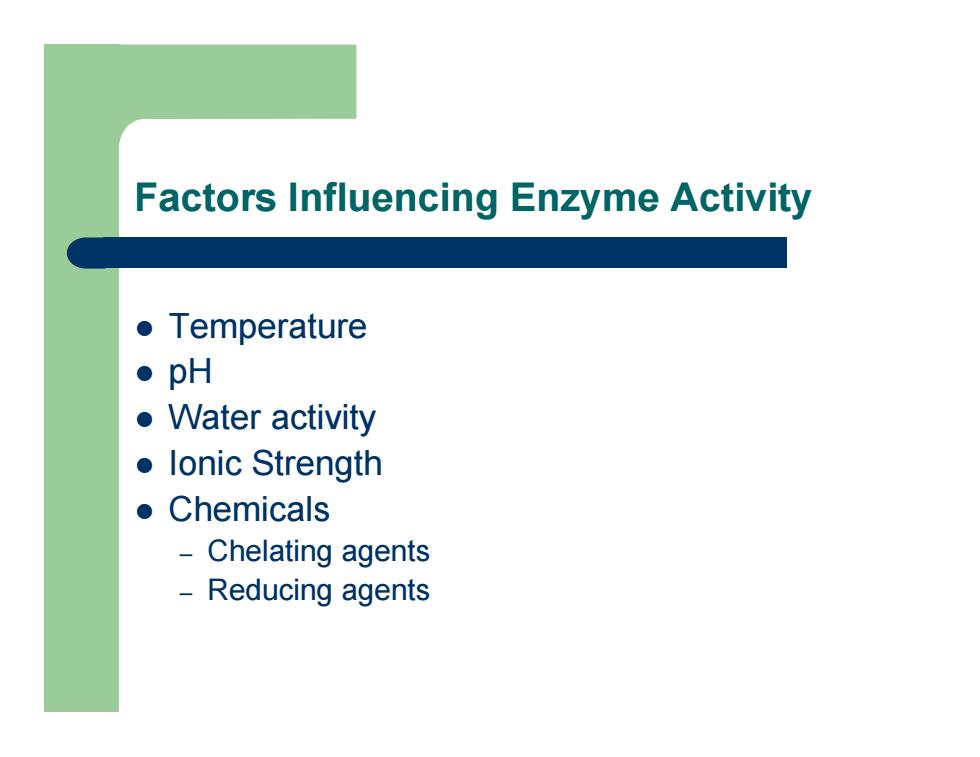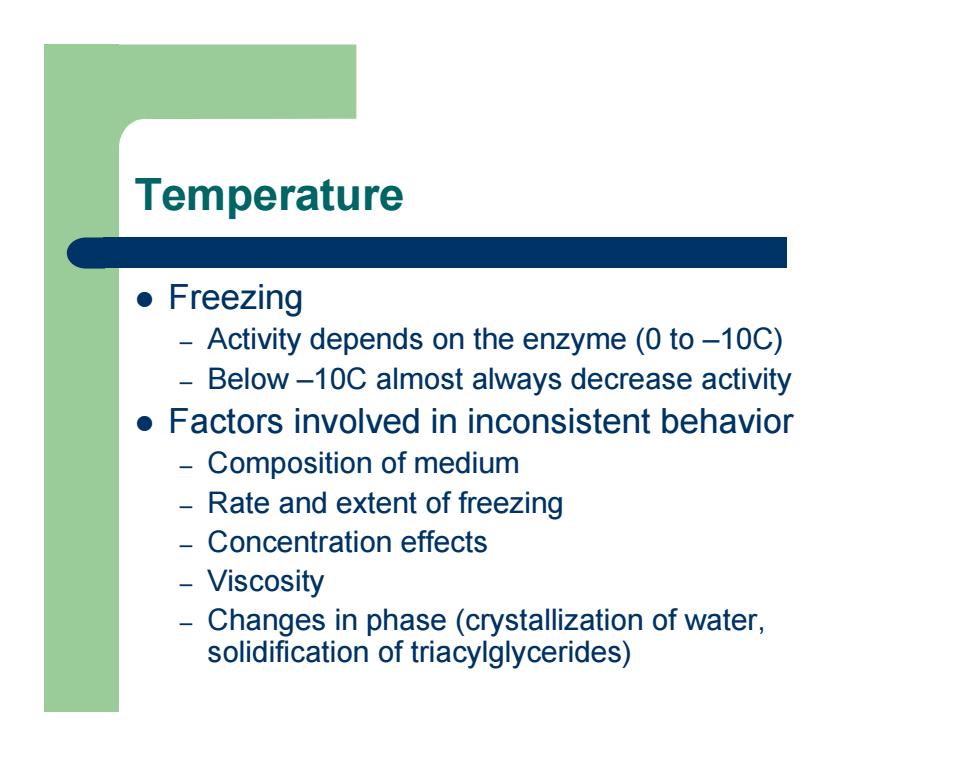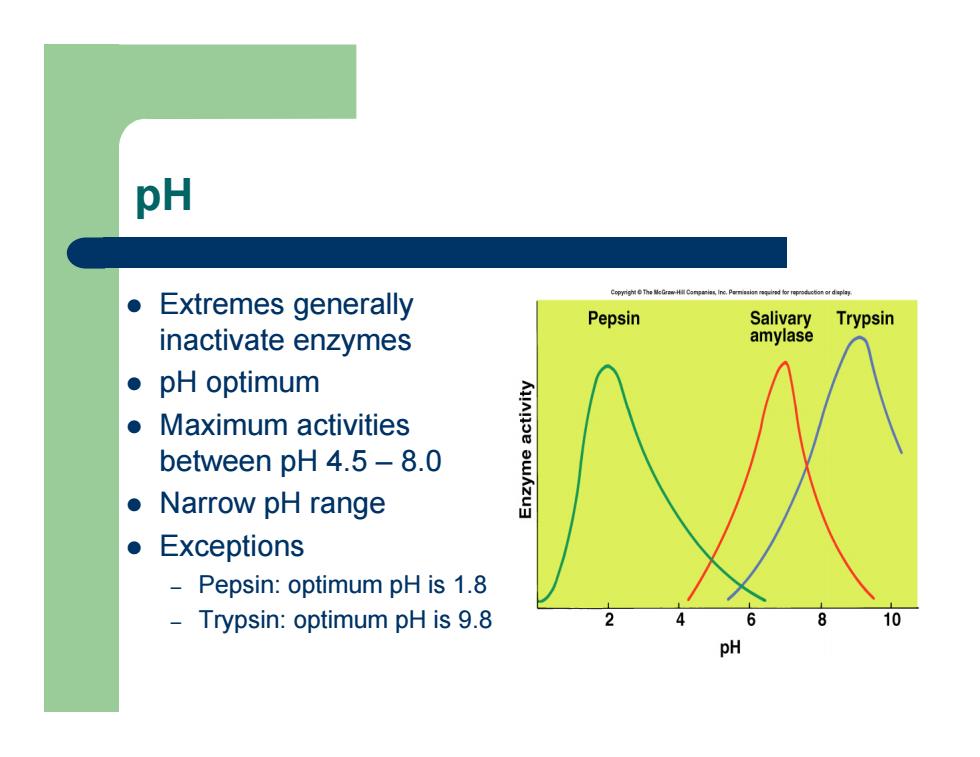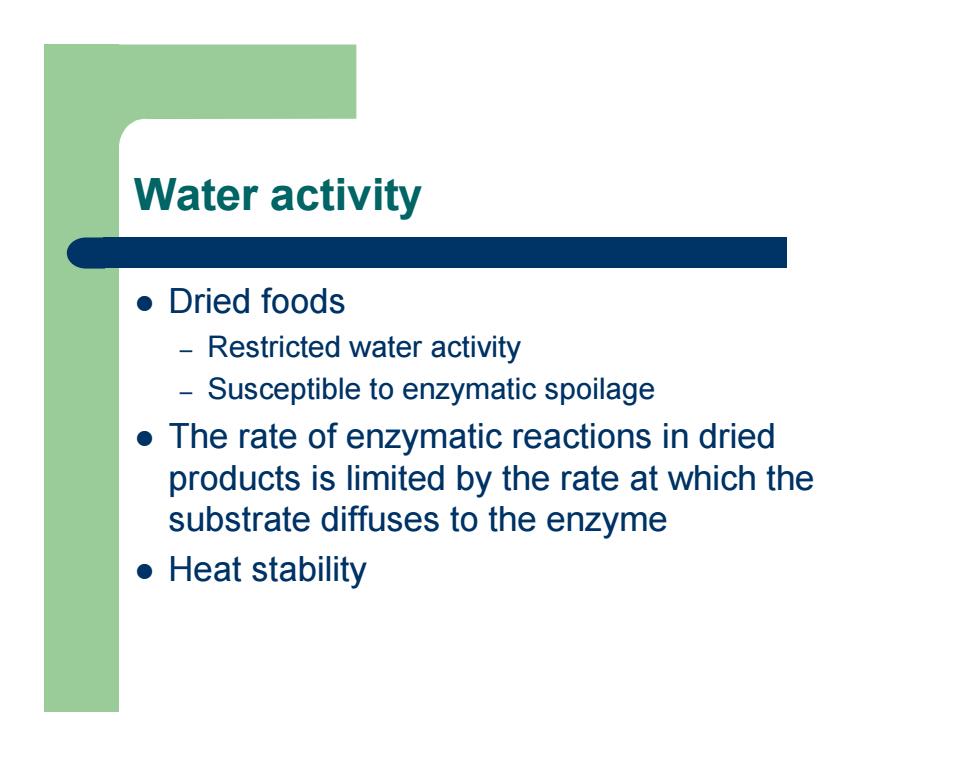
Factors Influencing Enzyme Activity z Temperature z pH z Water activity z Ionic Strength z Chemicals – Chelating agents – Reducing agents
Factors Influencing Enzyme Activity z Temperature z pH z Water activity z Ionic Strength z Chemicals – Chelating agents – Reducing agents

Temperature z Enzymes function very slowly at sub-freezing temperatures z Optimal activity in the 30-40C range z Denature above 45C
Temperature z Enzymes function very slowly at sub-freezing temperatures z Optimal activity in the 30-40C range z Denature above 45C

Temperature z Freezing – Activity depends on the enzyme (0 to –10C) – Below –10C almost always decrease activity z Factors involved in inconsistent behavior – Composition of medium – Rate and extent of freezing – Concentration effects – Viscosity – Changes in phase (crystallization of water, solidification of triacylglycerides)
Temperature z Freezing – Activity depends on the enzyme (0 to –10C) – Below –10C almost always decrease activity z Factors involved in inconsistent behavior – Composition of medium – Rate and extent of freezing – Concentration effects – Viscosity – Changes in phase (crystallization of water, solidification of triacylglycerides)

pH z Extremes generally inactivate enzymes z pH optimum z Maximum activities between pH 4.5 – 8.0 z Narrow pH range z Exceptions – Pepsin: optimum pH is 1.8 – Trypsin: optimum pH is 9.8
pH z Extremes generally inactivate enzymes z pH optimum z Maximum activities between pH 4.5 – 8.0 z Narrow pH range z Exceptions – Pepsin: optimum pH is 1.8 – Trypsin: optimum pH is 9.8

Water activity z Dried foods – Restricted water activity – Susceptible to enzymatic spoilage z The rate of enzymatic reactions in dried products is limited by the rate at which the substrate diffuses to the enzyme z Heat stability
Water activity z Dried foods – Restricted water activity – Susceptible to enzymatic spoilage z The rate of enzymatic reactions in dried products is limited by the rate at which the substrate diffuses to the enzyme z Heat stability